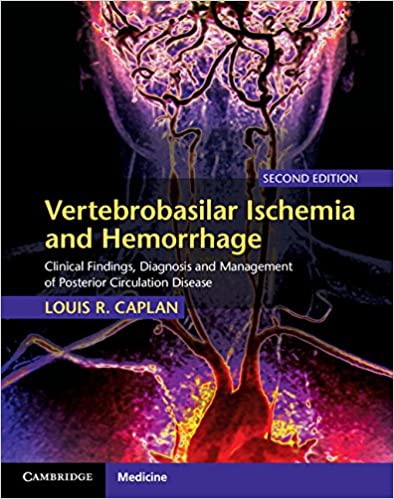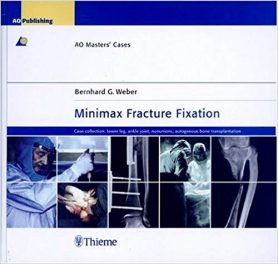 Author: Louis R. Caplan, MD
Author: Louis R. Caplan, MD
Publisher: Cambridge University Press – 594 pages
Book Review by: Nano Khilnani
In his Foreword to this detailed second edition of this book by Dr. Louis R. Caplan on posterior circulation disease, Dr. C. Miller Fisher that in the 1950s, “there was no therapy for the stroke patient. A stroke was a stroke was a stroke.”
What happened after that? Anticoagulants were introduced, and vascular surgery followed. As a consequence, Dr. Miller continues: “medicine was for the first time faced with the task of investigating the pathology and pathophysiology of the many types of cerebrovascular disease and laying down rules for diagnosis and management.”
Then, many diagnostic machines and tools were developed, including angiography, computed tomography (CT), magnetic resonance angiography (MRA), MR diffusion, magnetic resonance imaging (MRI), and neurosonography. Dr. Fisher informs us that in the new specialty of stroke neurology, it is now possible to intricately study strokes in the vertebra-basilar territory.
This book by Dr. Caplan is as extensive as it is intensive in coverage. It contains a very lengthy list of topics (that we have outlined by letters a,b,c, etc) that he discusses within 15 chapters organized around three broad Sections, as shown below:
- Section I – General Features of Cerebrovascular Disease in the Posterior Circulation
- Historical Background
- Early history
- Anatomy and pathology: the sixteenth, seventeenth, and eighteenth centuries
- The nineteenth and early twentieth centuries Basic Anatomy and Physiology
- Development of knowledge about the causes of stroke
- The modern era
- Acute reperfusion using thrombolytic drugs, thrombus removal with devices, and direct angioplasty and stenting
- Posterior circulation strokes
- Basic anatomy and pathology
- Brain anatomy
- Vascular pathology
- Signs and symptoms and their clinical localization
- Visual perception and related deficits
- Other cognitive and behavioral abnormalities including agnosia, alexia, and aphasia
- Reduced level of consciousness
- Moto abnormalities
- Vestibular and oculomotor abnormalities
- Sensory abnormalities
- Pupillary size and reactivity
- Automatic dysfunctions including abnormalities of cardiac and respiratory control and micturition
- Diagnosis: clinical, imaging, and laboratory
- Method of clinical diagnosis
- The frequency of various findings in the new England Medical Center Posterior Circulation Registry (NEMC-PCR)
- Common patterns of ischemia / infarction
- Diagnosis in the emergency room
- Question-driven imaging and laboratory evaluation
- Treatment
- Introduction
- Acute Ischemic stroke
- Stroke prevention
- Section II – Posterior Circulation Ischemia: Specific Vascular Sites and Conditions
- Extracranial occlusive disease: innominate, subclavian, and vertebral arteries
- The development of ideas and information
- Causes, frequency, and epidemiology of arterial lesions at various neck sites
- Symptoms, signs, and stroke mechanisms
- Diagnostic evaluation
- Treatment
- Intracranial vertebral arteries and the proximal intracranial territory
- Background and development of ideas
- Clinical findings in patients with proximal posterior circulation territory infarcts
- Findings in the New England Medical Center Posterior Circulation Registry
- Diagnosis and Treatment
- Basilar Artery
- Development of ideas
- Pathology, pathophysiology, and frequency of vascular lesions
- Other less common causes
- Symptoms and signs
- Reports of outcomes in patients with basilar artery disease before the NEMC-PCR and the BASICS studies
- Basilar artery lesions in the NEMC Posterior Circulation Registry
- The Basilar Artery International Cooperative Study (BASICS)
- Clinical and laboratory diagnosis
- Treatment
- Posterior cerebral arteries(PCA)
- Background and development of ideas
- Pathology and frequency of vascular lesions and stroke mechanisms
- Clinical symptoms and signs
- PCA and PCA territory vascular lesions in the New England Medical Center Posterior Circulation Registry
- Diagnosis
- Treatment
- Penetrating Arteries
- Development of ideas about the pathology that causes small deep infatcts
- Development of knowledge about the anatomy of posterior circulation branches
- Signs, symptoms, syndromes in penetrating artery disease at various brainstem sites
- The New England Medical Center Posterior Circulation Registry experience
- Diagnosis
- Treatment of patients with branch artery occlusive disease
- Cerebral Infarcts
- Essential cerebellar brain and vascular anatomy and physiology
- Development of ideas about cerebellar lesions and infarcts
- Cerebellar infarcts: distribution, general clinical signs, outcome, and etiologies
- Posterior inferior cerebellar artery (PICA) territory cerebellar infarcts
- Anterior inferior cerebellar artery (AICA) territory cerebellar infarcts
- Superior cerebellar artery (SCA) territory cerebellar infarcts
- Multiple cerebellar artery (MCA) territory cerebellar infarct
- Small, non-territorial cerebral infarcts
- Pseudo-tumoral space-occupying cerebellar infarcts
- Hemorrhagic cerebellar infarcts
- Concluding comments
- Migrane
- Background information about migraine
- Migraine ‘auras’ and accompaniments
- Basilar artery migraine
- Vascular and hematological abnormalities
- Migraine-like conditions
- Differentiation of migrainous accompaniments from atherostenous-related brain ischemia
- Migrainous strokes
- Summary and conclusions
- Venous and dural sinus thrombosis
- Anatomy
- Development of ideas
- Etiologies
- Distribution of the venous structures involved
- General clinical features
- Thrombosis of venous structures that drain the structures within the posterior circulation
- Diagnosis
- Treatment
- Section III – Posterior Circulation Hemorrhage
- Parenchymatous hemorrhage
- General considerations
- Historical background
- Hemorrhage at various posterior circulation sites
- Subarachnoid Hemorrhage, Aneurysms, and Vascular Malformations
- Subarachnoid hemorrhage and intracranial aneurysms
- Vascular malformations
This is truly an excellent book on the growing neurological specialty of vertebra-basilar ischemia and hemorrhage. It is probably the one o the best one available in the medical book market on this subject because of its broad yet detailed analysis of the many aspects it covers.
Author:
Louis R. Caplan, MD is Senior Neurologist at Beth Israel Deaconess Medical Center (BIDMC) and Professor of Neurology at Harvard Medical School in Boston, Massachusetts.







